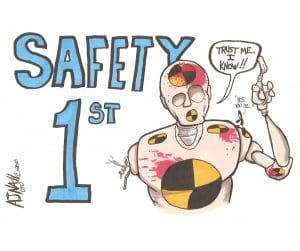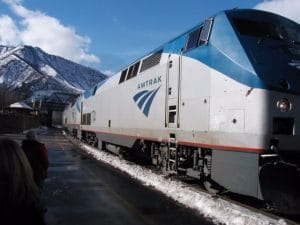WASHINGTON — Since its creation four decades ago, Amtrak has perennially teetered on the edge of financial extinction, annually fighting down to the wire for minimal funds to keep it operating.This year is no exception. And while UTU member and retiree phone calls — along with tens of thousands of others from Amtrak supporters nationwide — helped defeat an Amtrak-killing effort in the House of Representatives Feb. 17, the assault on Amtrak continues.
And as one should always expect a train at a highway-rail grade-crossing, we should always expect a congressional assault on Amtrak.
Indeed, there are those who do NOT love a train; but there are far more who do.
Limiting the ability of those in lawmaking authority to kill Amtrak — or so severely hobble Amtrak that death would follow — is a perennial effort requiring vigilance and education.
For rail employees — freight and passenger — this is a matter of job survival and family financial security.
This is because Amtrak’s survival means more than jobs for 20,000 Amtrak workers.
It means survival of Railroad Retirement.
Without Amtrak — and its workforce that numbers 9 percent of all active rail workers — Tier II of Railroad Retirement would suffer the same fate as Amtrak. Railroad Retirement Tier II cannot remain solvent should 20,000 Amtrak workers disappear from the employment roles and participation in Railroad Retirement.
Thus, Amtrak’s survival is as important to all active and retired rail employees as it is Amtrak’s current workforce.
Here are points of light for rail employees to communicate to lawmakers:
- The high cost of fuel, along with traffic and airport congestion, is drawing travelers back to trains for commuting and travel between cities as much as 500 miles apart.
- A Pew Research poll found that the number of Americans who enjoy driving fell by 10 percentage points over a recent 15 year period — and highway traffic congestion, rather than higher fuel prices — was the reason.
- The American Association of State Highway and Transportation Officials predicts that by 2020, some 90 percent of urban Interstate highways will be at or exceeding capacity.
- Philadelphia officials estimate 50 additional flights daily would be needed to handle Amtrak passengers arriving and departing from that city.
- Federal transportation officials estimate that without Amtrak service into Manhattan, 20 additional highway lanes, 10 new tunnels under the Hudson River and hundreds of acres of new more parking would be required.
- Civil engineers estimate that two railroad tracks have the capacity to carry as many people each hour as 16 lanes of highway; and 300 miles of railroad use less land than a single commercial airport.
- Railroads require less land than new highways and airports, they are less expensive to construct, they are more fuel efficient than highway or air transport, they are environmentally preferable to all competing forms of motorized transportation, and they are notably safer than highway travel.
To communicate these points to your elected lawmakers, click on the following link, and then type in your address and zip code to receive the name and direct office phone number of your elected lawmakers in the House and Senate:
 It’s winter — the three months of the year during which a significant number of yard fatalities and career-ending injuries occur.
It’s winter — the three months of the year during which a significant number of yard fatalities and career-ending injuries occur. WASHINGTON — The White House fiscal year 2012 budget request submitted to Congress Feb. 14 is unexpectedly generous toward the various modes of transportation.
WASHINGTON — The White House fiscal year 2012 budget request submitted to Congress Feb. 14 is unexpectedly generous toward the various modes of transportation.